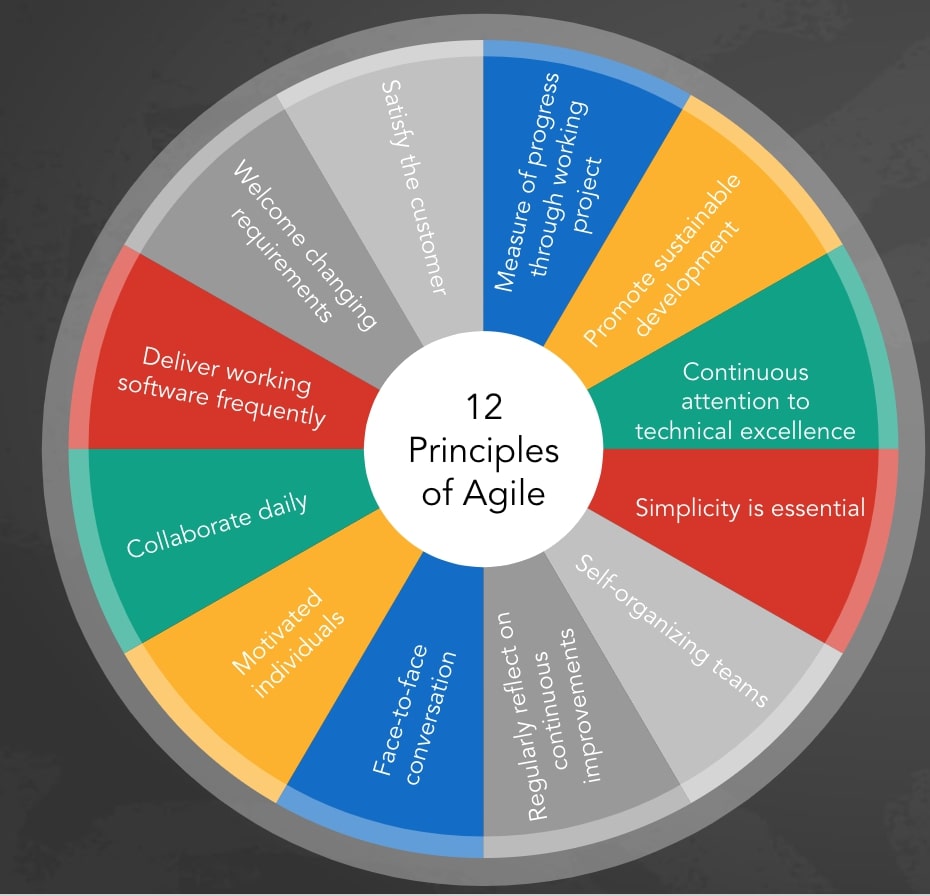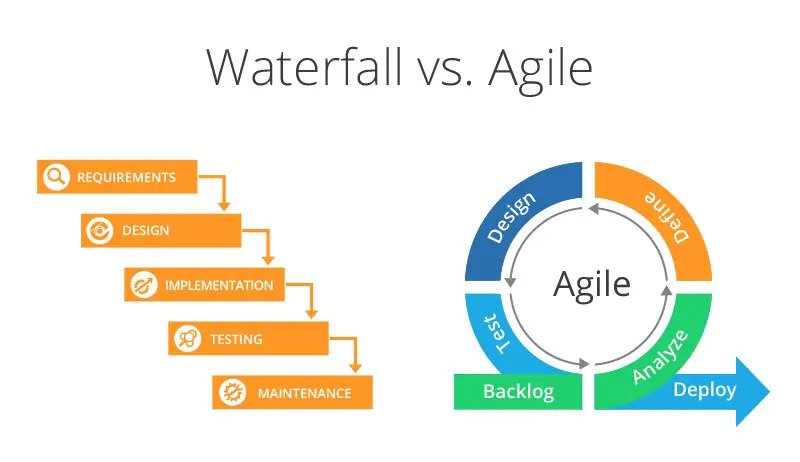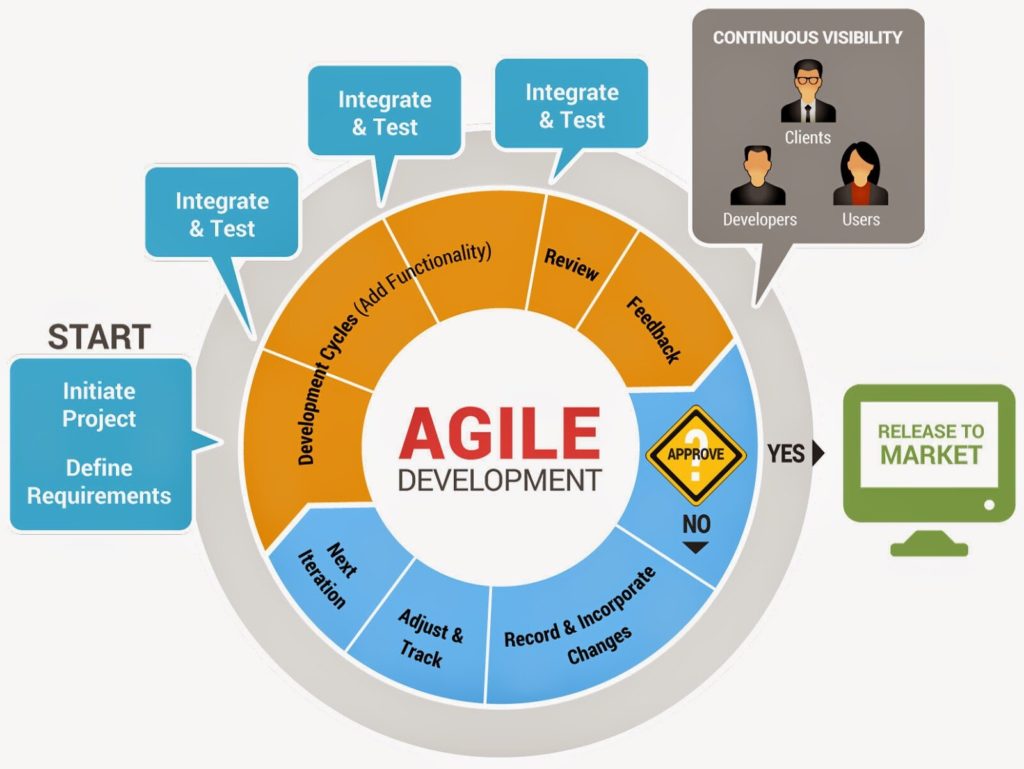Many organizations integrate the agile development process into their business strategy as a way of streamlining the development of products and accelerating their route to market.
A business strategy is successful when teams make interdependent choices throughout the product lifecycle that are flexible enough to not compromise the deliverable.
In this article, we break down key tips and insights merging business strategy with agile development to help you streamline your team’s efforts and maximize business growth.
Let’s dive in.
7 Tips on Merging Agile Development With Business Strategy
1. Understand Agile Best Practices
Before you begin to incorporate agile as a part of your business strategy, it’s important that both you and your organization understand the principles of agile as an approach to software development and a means of business growth.

Agile is a methodology whereby the product owner takes a collaborative approach to product management to allow interdependent teams to interact while delivering a product. The agile strategy uses the ideas of transparency, flexibility, quality control, and continuous delivery to provide a competitive advantage.
Business leaders have recognized the benefits of agile development in maximizing team output and increasing the likelihood of product success. For that reason, companies across different industry sectors have picked up agile and introduced it in the product development and project management arenas.
Ensuring that everyone in the company understands agile’s purpose reduces the likelihood of resistance to change and innovation. It also increases the chances that the team embraces agile as a way of progress and feels more engaged when working on the job.
2. Choose Your Business Strategy
Businesses employ one of the following strategic planning styles to deliver their products or services.
- Waterfall – A waterfall strategy follows a linear approach from the beginning of a product’s development to final delivery. It is an inflexible system where making changes to the process is complex. Each change has a knock-on effect on the next stage of the process.
- Kanban – The Kanban strategy focuses on the process rather than the overall deliverable and identifies ways in which individual elements of the process.
- Scrum – Scrum is similar to the agile approach and has many processes in common. It uses cross-functional teams to break work down into small, manageable parts, usually called sprints, that are given their own finish time. This allows the customer to review and provide feedback during product development. That way, development teams act on these responses with maximum speed and efficiency.
- Agile – The agile methodology promotes flexibility and cross-team working with everyone focused on delivering the product through a series of sprints. Teams adapt to changes in requirements with speed without endangering the product delivery.

Credits: Digite
Before you decide to incorporate Agile in your business strategy, you must be sure that Agile is the right fit for your company. Failure to do so results in a mismatched strategical approach that jeorpadizes your chances of success.
3. Improve Product Quality While Maintaining Flexibility
Utilizing an agile environment for your business strategy execution offers significant benefits to the product owner, project managers, development team, and the rest of the agile team.
For example, using agile methodology, teams break down large pieces of work into smaller, bitesize chunks through sprints. By collaborating with other agile teams and their customers, they deliver high-quality products and avoid common difficulties during the development process, such as spiraling costs, scope creep, and missing deadlines.
Product testing is a part of agile strategic planning, thus allowing business teams to identify and resolve issues throughout the product lifecycle without risking delivery.
In addition, as the name suggests, agility and flexibility are at the heart of the agile process. This makes it easier to adapt any variation to the initial objective or the product requirements.
4. Quicker Route to Market
Organizations that have realized the benefits of the agile strategy believe that it helped accelerate their product’s route to business.
They invest time in strategic planning, collaboration, and focusing on business objectives at pace, allowing the product to get to market at the earliest possible moment. This leads to more success with customer integration and allows for faster development of new product features and releases.
5. Greater Cost Control
Rather than reviewing the effectiveness and project budget once development is complete and the product has hit the market, an organization monitors costs as the project progresses. This allows the product owner, customer, or business leader to decide whether to continue, suspend or abandon the project depending on changing market conditions and business goals.
6. Guarantee Increased Project Visibility
Conduct regular reviews as teams complete sprints to oversee project progress and provide customers, leaders, and teams with complete visibility of the project.
The agile strategy allows customers to provide constant feedback through user stories and ask for changes as the project develops.
Another benefit of this approach is that the relationship between the customer and business is strengthened as trust builds.
7. Be Mindful of the Agile Manifesto
In 2001, a team of software developers designed the Agile Manifesto and documented their beliefs about how modern software development teams must work on projects.

Credits: Educore
There are four central pillars to the manifesto. They are:
- Individuals and cross-team collaboration over cumbersome processes and tools.
- Working processes over comprehensive documentation.
- Collaboration with customers over lengthy contract negotiations.
- Respond to change over sticking to a strategic plan.
In addition, the manifesto states several pieces of guidance on how agile strategy must inform a project execution:
- Customer satisfaction is of the highest priority throughout the development process.
- Changes in requirements should be welcomed, even late in development.
- Teams and developers must work together daily throughout the project.
- Agile teams must consist of motivated individuals.
- Face-to-face conversations are the most effective method of delivering progress reports and receiving feedback.
- A working and quality product is the primary measure of success.
- Agile methods must promote sustainable development.
- Technical excellence and design enhance organizational agility.
Keeping these principles in mind goes a long way to allow for the successful implementation of agile strategy.
Continual communication and collaboration with customers is the lynchpin of the agile approach. This co-working environment with the development team, operations teams, and customer keeps everyone informed of progress and enables the delivery of high-quality products.
How to Introduce Agile Methodology to an Existing Business Strategy
If your business strategy stands to benefit from adopting agile concepts, a good starting point is to begin a digital transformation. Use interactive software tools to aid collaboration and share real-time updates to help become an agile organization.
Implementing the latest tools and technology helps you gain a competitive advantage over others in the marketplace and allows you to adapt as the market shifts to stay relevant.
When beginning new projects, add in project constraints for each task and allow equal focus on all tasks, rather than spending too much time on one. Your team completes high-priority tasks with the strategy, minimizing the level of disruption to the business.
Agile methods allow the team to test the quality of the product throughout the lifetime of the product roadmap.
Collaboration, regular testing, and the customer feedback loop ensure that the team meets quality requirements while allowing them to adopt changes where necessary. Teams also find it easier to spot Issues and mistakes while they are still fixable without causing knock-on delays to the product delivery.
Successful implementation of agile methodology relies on continual development and identifying opportunities to improvise. Successful agile organizations take time following the completion of each sprint to interrogate the process.
Don’t be afraid to take risks. The business leaders that get the best results empower their teams to make decisions themselves. Encourage idea sharing, get as much feedback as possible, and have regular check-ins with your teams. An agile team is a happy team.
Agile Development and Business Strategy: Key Takeaways
An agile business strategy requires a mentality in which an evolving iterative approach realizes and retains value.
As well as transforming your overall way of working, adopting an agile approach empowers employees and delivers a high-quality final product to market.
This is the quickest way to organizational success.